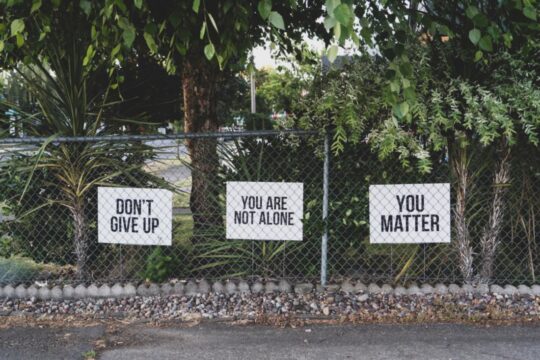- You have no items in your shopping cart
- Continue Shopping

Let’s look at some techniques that will help you learn how to accept all of yourself — the “good” and the “bad.” These are variations on a theme, but try one for a few days, then try another, and with time you’ll develop a strong self-acceptance skillset.
The Techniques
- Practice relaxed awareness.
What is relaxed awareness? As opposed to constant distraction, or concentrated focus, relaxed awareness is a soft consciousness of our thoughts, feelings, pain, self-rating and judgment, etc. It’s an awareness of our existence, and the stream of phenomena that is occurring at this moment, including thoughts and emotions and outside stimuli. To practice, close your eyes for a minute, and instead of pushing thoughts away or trying to focus on your breath, just softly notice your thoughts and feelings and body. You might see negative thoughts or emotions — that’s OK. Just notice them, watch them. Don’t try to turn them into positive thoughts or push them away. You can do this practice for 5 minutes a day, or up to 30 minutes if you find it useful. - Welcome what you notice.
When you practice relaxed awareness, you’ll notice things — negative thoughts, fears, happy thoughts, self-judgments, etc. We tend to want to stop the negative thoughts and feelings, but this is just a suppression, an avoidance, a negating of the negative. Instead, welcome these phenomena, invite them in for a cup of tea, give them a hug. They are a part of your life, and they are OK. If you feel bad about how you’ve been doing with exercise, that’s OK. Hug the bad feeling, comfort it, let it hang around for awhile. They are not bad, but are opportunities to learn things about ourselves. When we run from these “bad” feelings, we create more pain. Instead, see the good in them, and find the opportunity. Be OK with them. - Let go of rating yourself.
Another thing you’ll notice, once you start to pay attention, is self-rating. We rate ourselves compared to others, or rate ourselves as “good” or “bad” at different things, or rate ourselves as flabby or too skinny or ugly. This is not a very useful activity. That doesn’t mean to let it go, but just to notice it, and see what results from it. After realizing that self-rating repeatedly causes you pain, you’ll be happy to let it go, in time. Gratitude sessions. Wake up in the morning and think about what you’re grateful for. Include things about yourself. If you failed at something, what about that failure are you grateful for? If you aren’t perfect, what about your imperfection can you be grateful for? Feel free to journal about these things each day, or once a week if that helps. - Compassion & forgiveness for yourself.
As you notice judgments and self-rating, see if you can turn them into forgiveness and compassion. If you judge yourself for not doing well at something, or not being good enough at something, can you forgive yourself for this, just as you might forgive someone else? Can you learn to understand why you did it, and see that ultimately you don’t even need forgiveness? If we really seek to understand, we realize that we did the best we could, given our human-ness, environment, what we’ve learned and practiced, etc. And so we don’t need to forgive, but instead to understand, and seek to do things that might relieve the pain. - Learn from all parts.
We tend to try to see our successes as good, and the failures as bad, but what if we see that everything is something to learn from? Even the dark parts — they are parts of us, and we can find interesting and useful things in them too. - Separate from your emotions.
When you are feeling negative emotions, see them as a separate event, not a part of you, and watch them. Remove their power over you by thinking of them not as commandments you must follow or believe in, but rather passing objects, like a leaf floating past you in the wind. The leaf doesn’t control you, and neither do negative emotions. - Talk to someone.
This is one of my favorite techniques. We get so in our heads that it’s difficult to separate our thoughts and emotions, to see things clearly. Talking through these issues with another person — a friend, spouse, co-worker — can help you to understand yourself better. Use the talking technique together with one of the above techniques.
As you learn self-acceptance, realize that it is always available to you, and you can have it no matter what you do. You can learn, create interesting things and make connections with others, with self-acceptance at the center of that. It can change everything you do, if you practice.
Action step:
Set a reminder once a day to practice one of the techniques above. Do it for a week, then switch to another step. With daily practice, these skills become second nature.
By Leo Babauta


